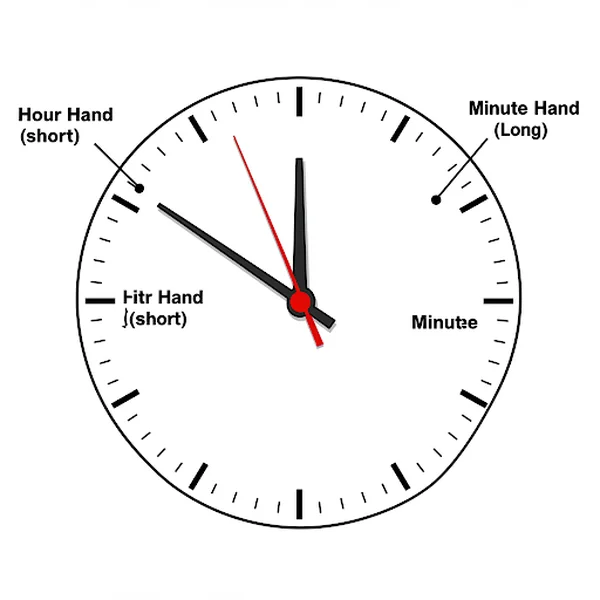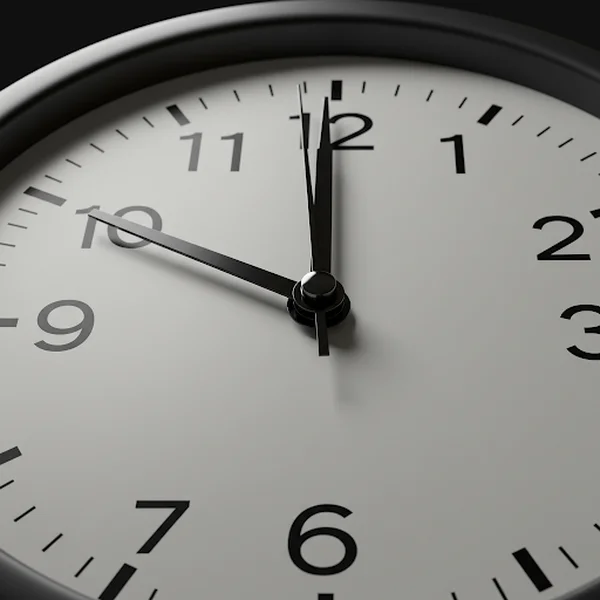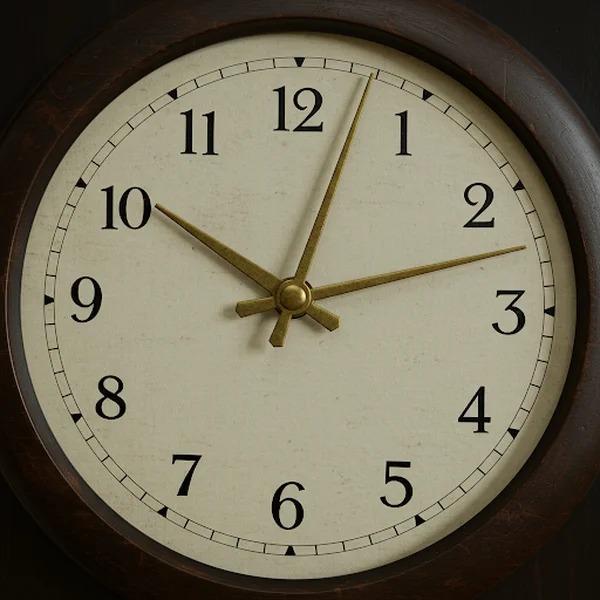How to Read the Hour Hand on an Analog Clock Easily
Unlock Time: A Simple Guide to Reading the Hour Hand
Learning to tell time on an analog clock is an essential skill, and understanding the hour hand is the very first step! It might seem a little confusing at first, especially figuring out what the short hand means when it's not pointing exactly at a number. How do you read the hour hand accurately every time? Don't worry, this guide will give you simple, easy steps to follow. You can start your learning time journey right now by mastering this crucial part of the clock.
What is the Hour Hand? Finding the Short Hand on Your Clock
How do you identify the hour hand? Look closely at the clock face with its numbers and moving pointers.
Spotting the Short Hand vs. the Long Hand
Most analog clocks have at least two main hands or pointers. The hour hand is typically the shorter and sometimes thicker of the two. The other longer hand is the minute hand (we'll cover that in another guide!). Just remember: short hand = hour hand.

The Hour Hand's Job: Pointing to the Hour
The main purpose of the hour hand is simple: it points to the hour of the day. As time passes, it moves slowly around the clock face, pointing towards the numbers 1 through 12.
Telling Time in Whole Hours: Reading the Hour Hand 'O'Clock'
Let's start with the easiest part: reading the time when it's exactly on the hour. How simple is it to read whole hours?
When the Hour Hand Points Directly at a Number
If the short hand (the hour hand) is pointing exactly at one of the big numbers on the clock face (like the 3, the 7, or the 12), then it's exactly that hour. We often say "o'clock" in this situation.

Examples: Reading 2 o'clock, 5 o'clock, 10 o'clock
- If the short hand points exactly at the number 2, the time is 2 o'clock.
- If the short hand points exactly at the number 5, the time is 5 o'clock.
- If the short hand points exactly at the number 10, the time is 10 o'clock. Easy, right? This covers all the whole hours.
How to Read the Hour Hand Between Numbers
Now for the part that sometimes confuses learners: What do you do when the hour hand is between two numbers? This happens most of the time!
Why the Hour Hand Moves Between Numbers
Remember, the hour hand moves slowly all the time, not just jumping from one number to the next. As the minutes tick by after an hour (like 2:15, 2:30, 2:45), the hour hand gradually moves towards the next hour number.
The Golden Rule: Read the Number It Just Passed
This is the most important rule for how to read the hour hand: If the hour hand is between two numbers, you always read the smaller number – the number it has just passed.

Visualizing: Half Past and Quarter Past Examples
- Imagine the short hand is halfway between the 2 and the 3. Has it reached the 3 yet? No. It has passed the 2. So, the hour is still 2. (It might be 2:30, for example).
- If the short hand is just a little bit past the 9, but not yet at the 10. What hour is it? It's 9! (It might be 9:10 or 9:15). Mastering this takes practice, and our interactive clock tool is perfect for seeing this movement in action.
Your Simple Steps for Reading the Hour Hand Every Time
Let's break down how to read the hour hand into super easy steps:
Step 1: Find the Short Hand
Quickly locate the shorter hand on the analog clock. That's your hour hand.
Step 2: Check Its Exact Position
See where the tip of the short hand is pointing. Is it exactly on a number, or is it between numbers?
Step 3: Say the Correct Hour
- If it's pointing exactly at a number, say that number (e.g., "4 o'clock").
- If it's between two numbers, say the smaller number (the one it already passed) (e.g., if it's between 6 and 7, the hour is "6").
Practice Makes Perfect! Try Our Interactive Clock for Hour Hand Reading
Knowing the steps is great, but clock reading practice is key to becoming confident. How can you get better quickly?
Why Practice Helps You Learn Faster
The more you practice identifying the hour hand and reading its position, the faster and more automatic it becomes. Repetition builds skill and confidence.
Using AnalogClock.net for Focused Hour Hand Practice
Our website, AnalogClock.net, features a fantastic interactive clock. You can move the hands yourself to see how the hour hand moves and test your reading skills.
Pro Tip: Lock the Minute Hand to Isolate the Hour Hand!
One of the best features for beginners on our practice tool is the ability to lock the minute hand. This lets you move only the hour hand around the clock face, so you can focus completely on understanding its position without worrying about the minutes yet.
Click Here to Start Your Clock Reading Practice
Ready to try it yourself? Start your clock reading practice now!
You've Mastered the Hour Hand – What's Next?
Congratulations! You now know the secrets to how to read the hour hand on an analog clock, even when it's in that tricky spot between numbers. Remember the golden rule: always read the number the short hand has passed.
Keep practicing! The more you use clocks or our online practice tool, the easier telling time hours will become. Once you're comfortable with the hour hand, you'll be ready to tackle the minute hand!
Common Questions About Reading the Hour Hand
Here are answers to some frequent questions:
Is the hour hand always the shorter one?
Usually, yes. On most standard analog clocks, the hour hand is noticeably shorter than the minute hand. This helps distinguish them easily.
What if the hour hand looks exactly halfway between two numbers?
Even if it looks perfectly in the middle (like between the 4 and 5 when the time is 4:30), the rule still applies! It hasn't reached the 5 yet, so the hour is still 4. You always read the number it has passed.
How can I practice reading just the hours effectively?
The best way is using an interactive practice tool where you can isolate the hour hand. Our website lets you lock the minute hand, making it perfect for focusing solely on telling time hours without distraction. Regular clock reading practice with this feature is highly recommended.